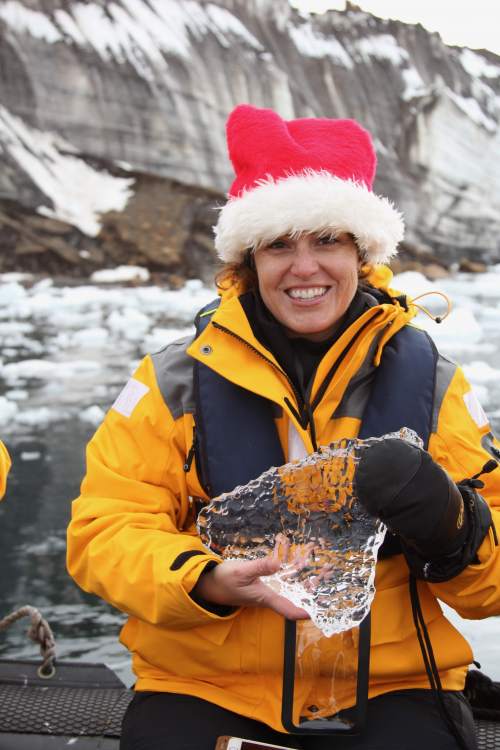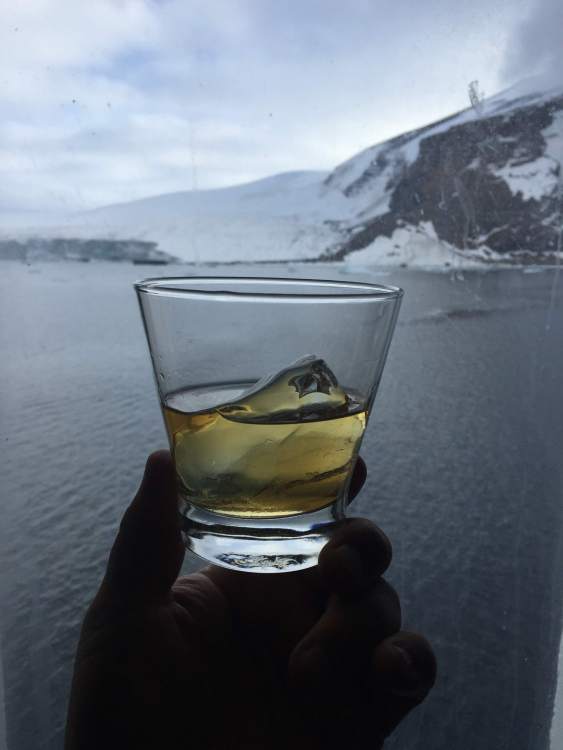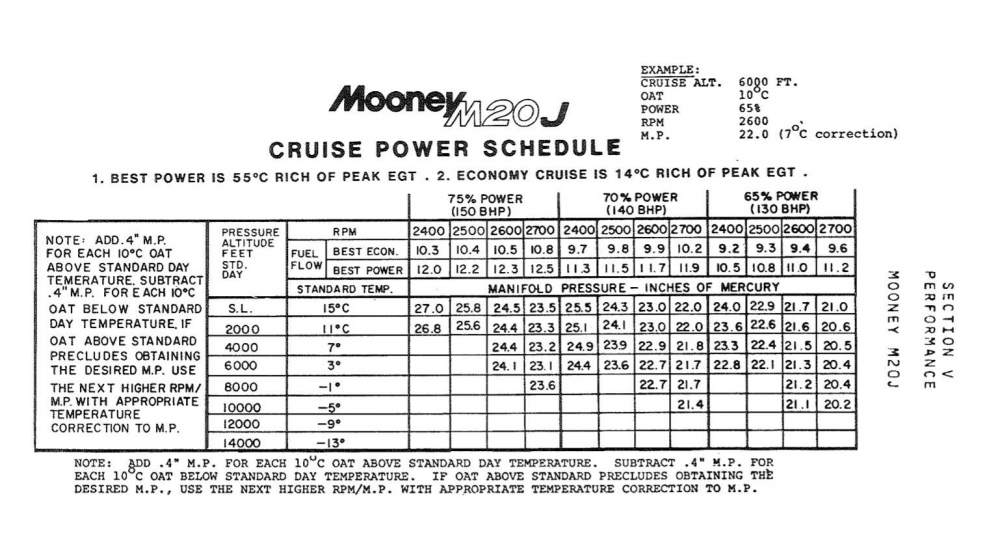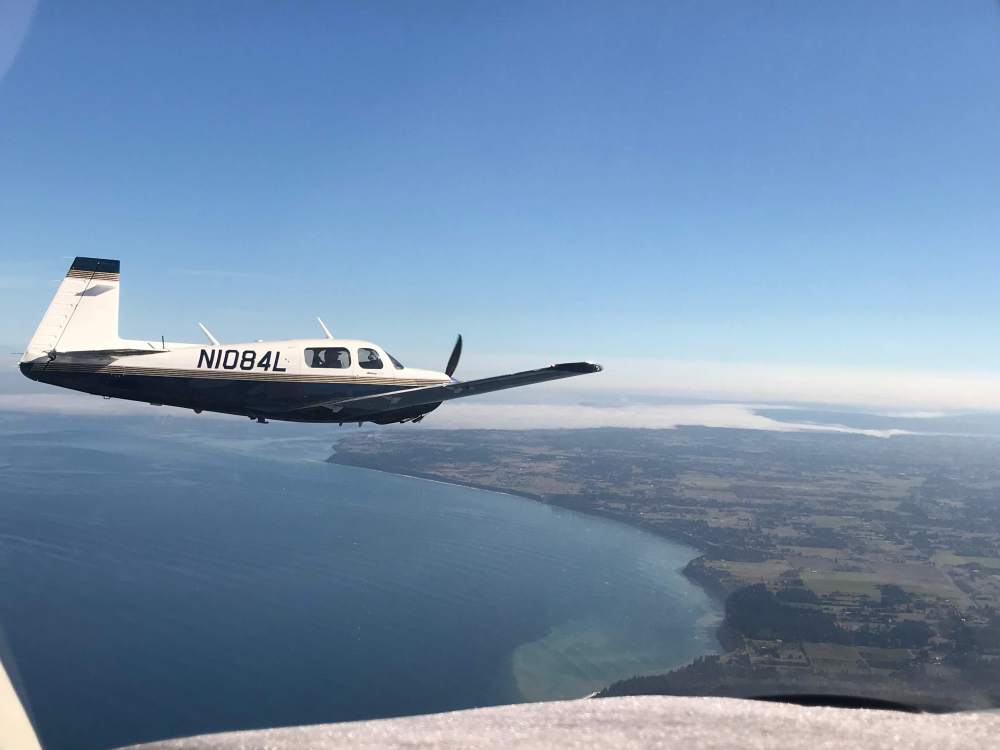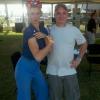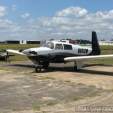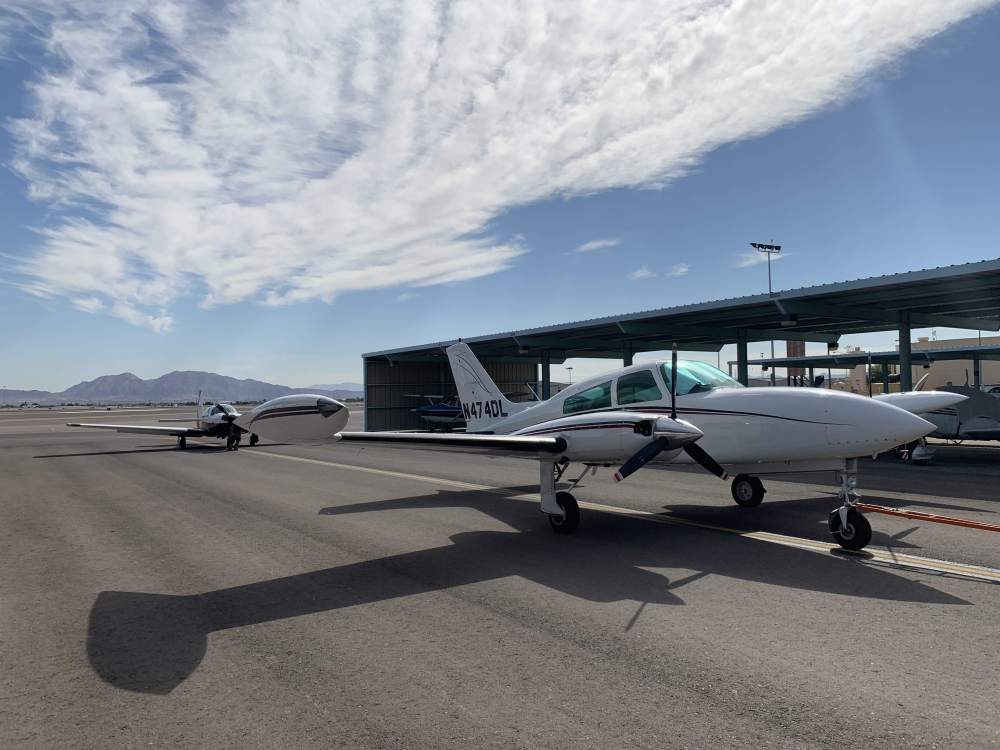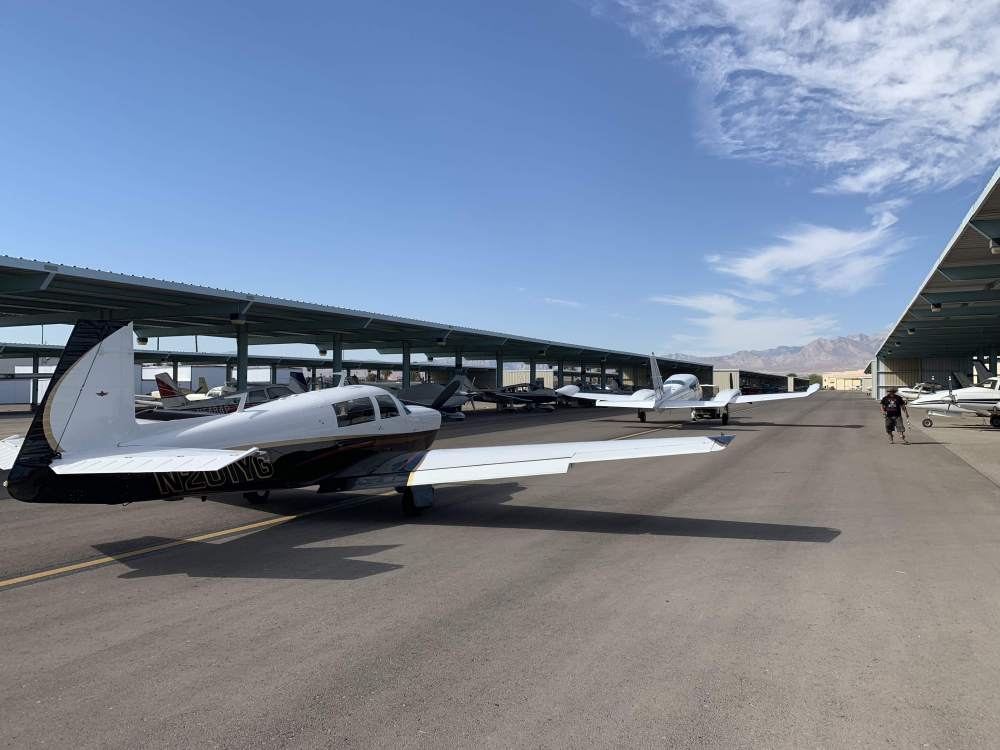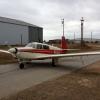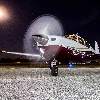Leaderboard
Popular Content
Showing content with the highest reputation on 10/24/2018 in all areas
-
Or should I have responded?: 1) Looks 2) Like 3) I 4) Have 5) My 6) Work 7) Cut 8) Out 9) For 10) Me Just the opinion of a MooneySpace Poster, not a professional poster or instructor. Sent from my iPad using Tapatalk Pro7 points
-
You have one of the coin operated Mooneys. They fell out of favor when people realized that keeping the correct amount of change onboard for a flight was difficult.7 points
-
I always assume there will be icing in the clouds when the temperature is at or below freezing. I use several sources to get an idea where the clouds are: Skew-T, Ogimet, and WeatherSpork. If the MEA and my direction of flight will allow me to cruise below the freezing level I don't worry about it. If I can't do that, then I consider what you suggested. Will I be on top before I get to the freezing level? And will I be able to descend below the freezing level at my destination before I enter the weather? If I can't do that, can I fly the entire route VFR below the weather? If I can't do that, I stay home.6 points
-
Unfortunately... 1) It is the quality that counts, not the quantity... Fortunately... 2) I’m glad we have you guys here that supply so much quality! 3) MS is incredible in its way to connect Mooney people with questions, with other Mooney people, with real answers. 4) Some MSers are just a link in that all important chain. I’m thrilled when I help with one of those connections... 5) Other things that are really cool... pulling out a 20year old M20C memory that is pertinant to a conversation today, as it would have been 20years ago... 6) Where else can you get such a good cognitive exercise, and practice your spelling, word use, and ethics at the same time? hmmm, 3:00pm is so much brighter than 3:00am... You guys just made my day... Thank you and best regards, -a-5 points
-
5 points
-
When I encounter ice, I try to incorporate a little bourbon and branch water. In most all other cases, I feel it should be avoided.4 points
-
How the heck did you come up with 2400/24? Just go WOT anywhere above 3000ft, 2500RPM, and bring the mixture back to 8-8.5GPH and you'll be golden. If you want more power, then you'll have to learn a thing or two about engine management, detonation, and leaning.4 points
-
And until then, Marauder is here for you. [emoji6] Sent from my iPad using Tapatalk Pro4 points
-
Speaking of ice... we scooped this piece right out of the ocean. It had come off the bottom of a glacier and had all the air and impurities pressed out of it by the immense pressure. So it was absolutely crystal clear. We took it with us back to the bar on the boat where the bar tender knew exactly what to do with it.3 points
-
Since we're making recommendations, I'll mention that the angle valve intake is tuned to distribute air as evenly as possible at wide open throttle (WOT). cocking the throttle butterfly likely negates some of that tunning. Air is free so why not use as much as you can? My engine remains at WOT from take off until I start planning pattern entry at my destination. I use mixture and RPM to effect changes to FF, CHT and NVH.3 points
-
I live close to Rob and agree as long as the plane is in a hangar. If I didn't have a hangar, I'd just move further south. You know you are "far enough south", when someone says, "What's an engine heater?"3 points
-
https://aviationweather.gov/gairmet/plot Select Icing and Desired Time https://aviationweather.gov/windtemp/plot Select Plot -> Temperature Vert Level -> Desired Altitude Time -> Desired Date/Time This not only lets you see forecast temperatures but a graphical image of the trend with altitude and time around the entire country! Helps if you're thinking how to deviate around it.3 points
-
Please join me this Thursday evening, October 25th at 8:30 pm EDT for a live webinar on "What the FAA doesn't want you to know about weather." If you'd like to attend, please register using the URL below. If all seats are not filled, registration will close by 3 pm EDT on Thursday. You will be sent an email on how to join the GoToMeeting session shortly after registration closes. Please check your spam folders for that email. https://www.signupgenius.com/go/20F0D4BA4AB2AA2FD0-whatIf you cannot attend, there will be an attempt to record this live webinar. Assuming there are no technical difficulties, it will be posted to the WeatherSpork YouTube channel at a later date. If you don't plan to attend, please go out today and subscribe to the WeatherSpork YouTube channel so you don't miss this important presentation. Hope to see you there!2 points
-
2 points
-
That's interesting. I've not seen that. But I'd be very leery of running at say 75% at Peak. That would put you right in the middle of the Red Box/Fin most of the time. Flying a N/A engine, I'd regularly run right at Peak but I was typically high enough to be at very low power. 12K or 13K in an M20C will be well below 65% power. So peak is a great place to run. But with my turbo, I set the % power regardless of altitude. So I tend to be a bit more cautious. I either run 75% and 100° ROP or 65% and 30 to 35° LOP. Either way, my cylinders stay cool and I'm just babying my engine. And with 1500 hours on the original cylinders, I feel like it's time to baby it all the way home to TBO.2 points
-
From what I've seen Deal's Gap is highly overrated. Always slow cars and Harley on the thing. I know better roads in WV that are immaculate and untrafficked, except for the locals who drive even faster than me.2 points
-
I have encountered ice a few times in my Missile and twice in my former M20F. Escape as soon as possible. Turn 180 degrees and leave the area. Climb through a thin layer quickly (ice tends to accumulate faster at the top of the clouds). Descend quickly through the layer on your approach. Don't fly if there are reports of icing. Play your route to go around the reported areas of icing. Descend to warmer air below. You can plan and work your way around ice in winter flying, but if you are ever in it - get out. Have an out. Don't fly on days when you don't have an out and its likely you are going to have an encounter. My worst was a trip along the Appalachians and it was not forecast, but all of a sudden I heard reports of it where I was headed, and low and behold, it started forming on my airplane. I asked for lower, and lower, until I was as low as possible. I had descended below the cloud deck, and simply carried it the rest of the way to landing. I was flying fine and it was no longer accumulating, so I landed. It broke off as I entered warmer air at my destination. When climbing through a thin layer in my M20F I picked up some light ice but made it up very quickly (in Detroit). Once above the clouds, it dry air it sublimated off pretty quickly. it was above freezing near the ground so I knew I could descend if needed. In the Cirrus SR22's I fly for a charter company, they all are FIKI and I turn on the TKS prior to entering any type of visible moisture if near or below freezing. Recently near IAD, Dulles, there were reports of light icing at 5-6000 feet. During the climb and decent I put the TKS on prior to entering the cloud layer - didn't accumulate anything but ran the fluid anyway. It is important to not when disembarking or climbing into your airplane, if you ran TKS fluid, watch your footing - it can be VERY slippery - this is not in any of the training I read. -Seth2 points
-
One thing you might consider is attending the Mooney Safety Foundation Pilot Proficiency Program (PPP) in Lakeland Feb. 1-3, 2019. You will get a lot of flying knowledge about your new-to-you Mooney as well as tons of education on systems, speeds and feeds, and configuration management specific to your model Mooney. Not to mention it will likely attract many Mooney pilots, as it always does.2 points
-
This is like the one I bought https://www.amazon.com/Wireless-Mobile-Remote-Control-110-220V/dp/B0174NTYBQ Also got a sim card from T-mobile for a few bucks, then enrolled it in a 3 for 30 prepaid plan. 3 dollars a month for 30 minutes or text. Allows me to send a quick text a few hours before I am ready to fly to start warming up the engine (all for 3 bucks a month!). Once I get to the airport I pull the dryer vent from the cowl and stick it in the window to preheat the cabin while I finish my preflight. When I am all ready to go the engine and the cabin are both toasty.2 points
-
Welcome Jesse, Congratulations on your new to you M20J. If you're looking for precision, I would say the POH is not a great reference. Especially for the year and model of your machine. Does your POH look like the attached table? Who sets their engine at 23.2inHg or 25.8inHg? In addition to being ridiculous, it's likely inaccurate and not repeatable in practice. If you want precision, you'll need to develop your own data. The truth is we never really know the actual power being made. The POH charts are needlessly complicated and require looking at a separate table to determine book speed which is likely inaccurate anyway. Short of a dyno run, power is an estimate (even with a fancy $5000 engine monitor) that probably get's close +/- a few percent. It is easier to calculate power on the lean side of peak, but it's still an estimate. It would be a more useful exercise to familiarize yourself with how these engines run, their shortcomings, what settings are most gentle, what settings are most aggressive and the pros and cons of of settings across the spectrum. The goal is to know the how speed, fuel burn and engine temps are related and how to set the engine to get closest to the desired goal. The POH charts are needlessly complicated and require looking at a separate table to determine book speed per which is likely inaccurate any way. I tell everyone to start with these columns written by John Deakin. John is a continental guy, but the concepts are applicable to any fixed timing, air-cooled aeroengine. Most of the folks on this forum have read them. These columns have likely been one of the greatest influence on the current thinking regarding recip engine management. Pelican's Perch #63:Where Should I Run My Engine? (Part 1) Pelican's Perch #64:Where Should I Run My Engine? (Part 2 -- The Climb) Pelican's Perch #65:Where Should I Run My Engine? (Part 3 -- Cruise) Pelican's Perch #66:Where Should I Run My Engine? (Part 4 -- Descent)2 points
-
And if you are like @201er, the entire country is in range for deviations.2 points
-
A McLaren. It does exist, but you've most likely only seen one in pictures. Anyone can drive one, but only if you have connections. And even if you are very careful, it can get away from you in a split second and destroy itself. But in the hands of a true professional, nothing performs, drives, flies, quite like it. Oh... and it's almost impossible to insure... just like a McLaren.2 points
-
2 points
-
So nice to hear , that my "wares" prevented a catastrophe...….2 points
-
2 points
-
Fred, this is the first I've heard that my landing gear is fragile . . . Ground clearance is 10", with very little lost due to nose gear compression, because those shock discs don't compress much [almost none compared to pneumatic struts]. I don't go off-roading in my C, but grass strips are not a problem. Look up "piperpainter" in his bright red M20-C on youtube, and you may learn something about the "fragility" of our landing gear and where our planes can be flown. But no, don't look for me in many of those places . . . . I ain't that good! The plane, however, is fine.2 points
-
Look at Cessna P337s. They don't have the same speed, useful load, seating capacity, pressurization differential or known ice certification of the more traditional choices like 58P, 340 or A*. If you can live with 1,300-1,400 lb useful load, five seats, de-iced, a sea level cabin at 7,000 ft transitioning to a 7,500 ft cabin at 17,500 ft and 180-200 KTAS, a P337 might just be for you. You get an airstair door, comfortable cabin, stable airplane with no adverse yaw in the event of an engine failure and two engines that are essentially the same as in the Mooney 252.1 point
-
1 point
-
Basic Member 7,627 14,608 posts Location: Delaware Model:1975 M20F Report post Posted 6 minutes ago Or should I have responded?: 1) Looks 2) Like 3) I 4) Have 5) My 6) Work 7) Cut 8) Out 9) For 10) Me ROTFL1 point
-
1 point
-
1 point
-
1 point
-
1 point
-
1 point
-
Thanks gsxrpilot. I have read many of your posts. Go easy on me, I'm a rookie. I updated my profile. X39 is Tampa North, just SE of KBKV Brooksville.1 point
-
Hmm. I think the comparison all depends on your frame of reference... are we just talking piston GA vs all of auto? Or are we comparing all of aviation with all of auto? Light twins have been mentionEd, but no VLJ’s or turbo props.... hard to say a Mooney is a Lamborghini, or even a Porsche, if we’re including turbo props in the comparison (check out @Yooper Rocketman ‘s if you dont’t believe me!) my previous work jet went Mach 2.5... but only seated 1 pilot. My current one only goes Mach 1.7...So those would be F-1 /NASCAR / Indy cars. airliners? Buses. Light twins? Micro buses / old SUV’ss business twins/turbo props- modern SUV’s So that leaves us with piston singles... my mooney physically (and legally W&B wise) carries everything (standard trip luggage wise... is not bricks) I can fit in the back of my ‘14 Dodge Durango, along with me, my wife and two kids (6&8yrs old) and about 60-70 gallons of fuel. It’s cramped on the inside, but it can fit all that stuff legally. it goes a comfortable speed for an airplane, although it’s at the upper end for a piston single. It has a nice set of features, GPS, Bluetooth music. Leather interior. So, given all that... I’d say the best overall comparison between a Mooney and a car, when considering the entire spectrum of aviation is probably a BMW X3 very light SUV. Not the fastest cars out there, but good handling, can carry a bunch of stuff if need be- but will be a bit cramped. Can’t really put more than three adults in there for any extended period of time and be comfy. A decent traveler in all conditions, too- ice, snow, rain, sun. Now, if we’re just using piston singles as our comps- I’d say a BMW M4 sedan- for all the same reasons as above- except now we’re a four seat *trackable* car that can match just about anything out there in speed and handling on the track while still giving you a convenient daily driver capability (with four seats). I’d still reserve the likes of a Super car for highly modified experimentals, though: super fast... maybe not the best daily driver, but fun to take out when the day is right!1 point
-
There's always more than one way to skin a cat, but I prefer a saying I heard years ago in the Air Force: A superior pilot uses their superior judgement to avoid situations requiring their superior skill to save their superior ass. When in doubt, just don't do it.1 point
-
1 point
-
Indeed the above statement is correct...I was not suggesting that if you were to trim the plane for 500fpm descent that you would maintain something less than one G once a stable descent rate has been established. I was asked what I meant by unloading the wing in the context of my explanation of a short field landing. Perhaps I should have been more clear. I fly a stabilized final at 1.2 Vso until I can approximate how much energy is needed to arrive above and ahead of my TDZ on speed. I then slow to 1.1 Vso power off at the time I deem appropriate; I then use pitch to maintain that target speed. That part of the maneuverer is typically less than 100' from the flare. The aircraft is most definitely in reduced G state as it takes a steep approach to maintain flying speed (again I'm talking approach angle, not pitch angle which will look nearly flat). The flare which arrests the descent will culminate in slightly more than a 1G (for the same reason you stated above) and an AOA that produces enough induced drag to slow the airplane to stall speed, ground effect cushions the touchdown. If lucky enough to get everything right, there is no float at touch down.1 point
-
I also have the Reiff Turbo XP. Heats up the engine quicker than I expected.1 point
-
I have done a lot of short field (<2000') work in the mid bodied airframe. The goal of any true short field procedure should be to arrive at the touchdown point with just enough energy to flare and little more. You will get all kinds of general advice, some of it will work some of the time... There is really only one way that I know of to make a true short field landing consistently: 1) Relatively steep, power off full flap descent slowing to 1.1Vso on short final. This more than any other is a pitch for speed, throttle for altitude situation. 2) Very little to no round out but more a gentle flare begining around 35' AGL becoming aggressive just prior to touchdown. It's not a comfortable procedure. It's not a procedure with tremendous margins (though safe enough with practice). If done at the proper speed, you will run out of elevator travel just as the plane touches down. The last few feet of ground effect will provide additional cushion. The above will technique will yield incredibly short landings in the mid body. I have had my F down and stopped inside the first 800' of runway many times using this procedure. Practice getting the procedure right on a longer runway without to much focus on TD point. The focus should be on speed control (pitch) and flare. The wing should be unloaded during the last part of the descent. The flare should use all remaining flying energy. IT's easy to know you've succeded, because the airplane is fully planted even with the yoke full aft. I do not like the shallow, high AOA "drag it in just above stall" method. If the engine hiccups, you've almost no energy or altitude left to work with. The method I describe is a slow but low AOA descent transitioning to high AOA full stall in th flare. You need to have an approximate idea of stall speed by weight. Using gross stall numbers when light creates float. carrying power to the threshold should only be needed in a headwind. I like to loosen the vernier on the throttle for quick and precise throttle inputs (just remember to tighten on take off).1 point
-
Consider Baja this winter to pet the California Grey whales and land right by your hotel on the Sea of Cortez side at Mulege (or Loreto if you prefer) and then hop over to the Pacific side to land at San Ignacio dirt strip to pet the whales and then hop on back over to Mulege for the night. Although @MBDiagMan would also have a great time hitting many dirt strips in Baja in his tailwheel, the Mooney is the traveling machine to get you down there and back over a 3-4 day weekend; especially when it includes some winter weather that would keep the tailwheel at home!1 point
-
AFAIAK you have the wrong plane for the mission. A 180 or a Maule would be MUCH better suited. Even my 140 would be a much better choice although you wouldn’t haul as much or get there as fast. My $0.02,1 point
-
1 point
-
Well the time has come, with our growing family I really needed something bigger so I jumped off the cliff and bought a Cessna 310R Colemill conversion, man she is sweet but really likes to drink 100LL. I was thinking it was going to take a while to sell 1YG so I would have more time with my Mooney however a local guy @jrothen4 snatched her up real quick. Its a great bird that I have upgraded throughout the years and it will serve him well. Also since he is local we are keeping the plans to do the first TruTrak install on 1YG. I will definitely still be around here frequently and in any if you guys come to Vegas shoot me a line!!!1 point
-
1 point
-
Not only that, but I suspect these are drilled in place when the planes were built, and thus the rivet holes in a salvage seat rail might not match those in your plane. I think getting a new part (if necessary) is the best choice here.1 point






